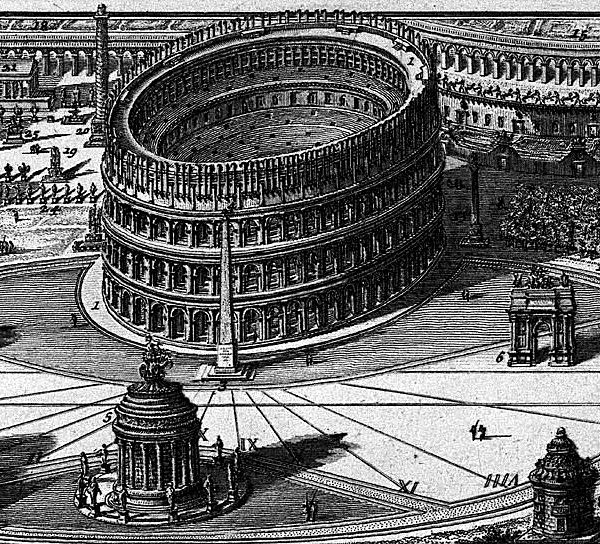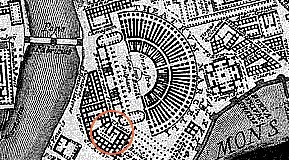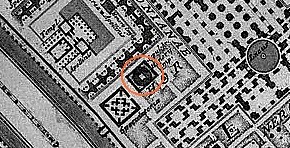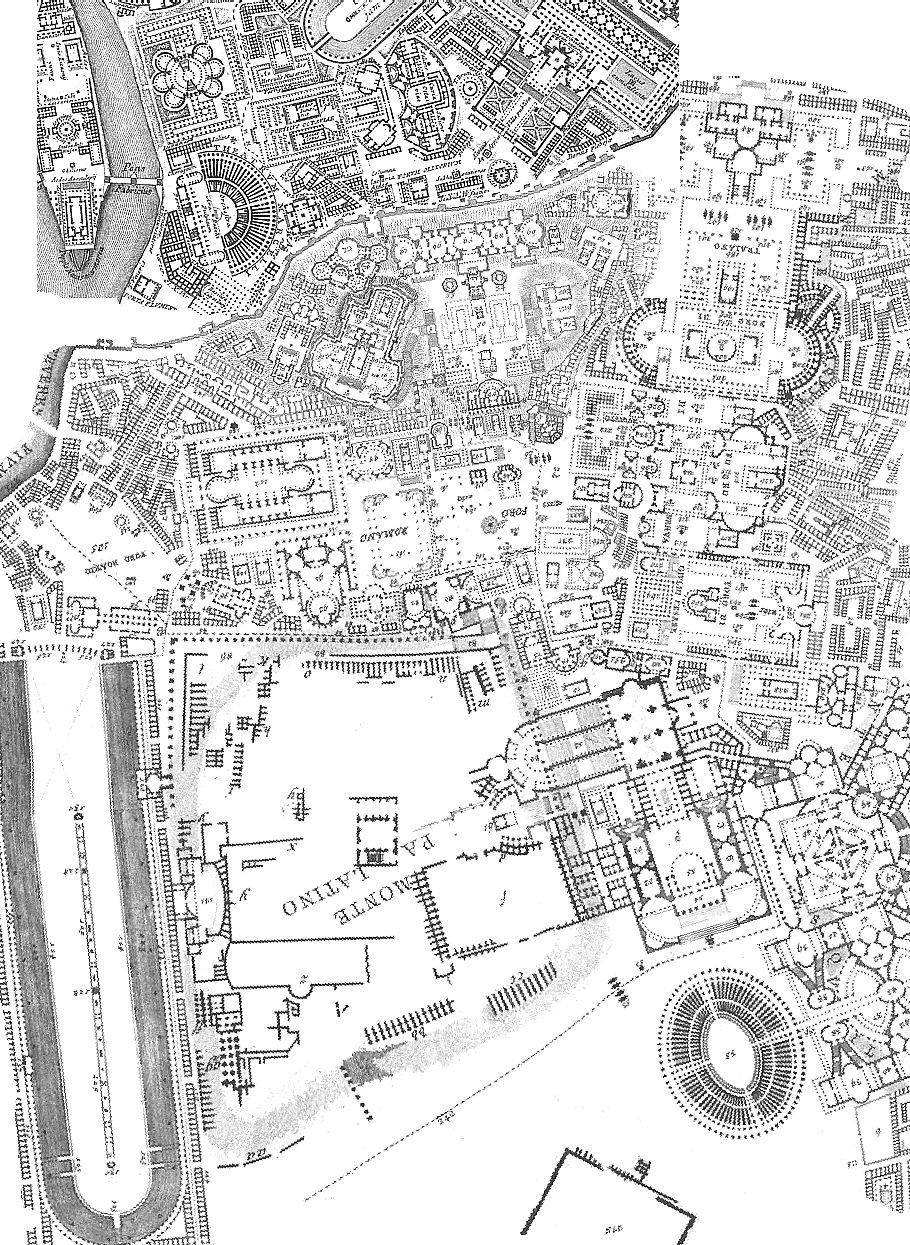| Encyclopedia Ichnographica | Amphitheatrum Statilii Tauri | 1 |
The first stone amphitheatre in Rome was built in 29 B.C. by L. Statilius Taurus. It belonged to the family of the builder, and seems to have been of small size. It was burned in the great fire of 64 A.D., but Nero immediately erected a wooden amphitheater, perhaps on the site of that of Taurus. No traces of either amphitheater have been found, but the slight elevation in the campus Martitis, called monte Giordano, is thought by some to have been caused by the ruins of the building of Taurus. (Platner)
|
|
2008.08.08 13:27 |
2013.12.24 19:05
Similarly, the T[emplum] Pietatis and the Theatrum Marcelli are delineated together within the Ichnographia, yet the temple of Pietas was destroyed by Augustus in order to make room for the theater of Marcellus.
Of more interest, however, is that Piranesi also omitted buildings that should have been delineated within the Ichnographia. While the Sepulchrum Honorij Imp., the mausoleum built by the emperor Honorius circa 400, is within the Ichnographia, the building that the mausoleum was in actuality attached to, the basilica of St. Peter built by the emperor Constantine circa 330, is not delineated within the Ichnographia.
|
|
Quondam © 2019.11.30 |





